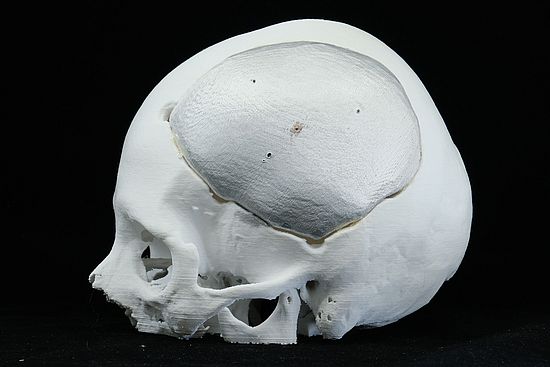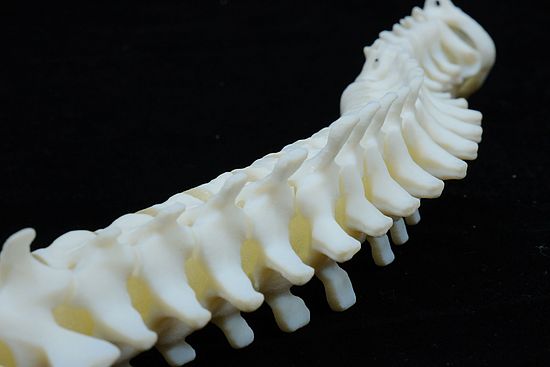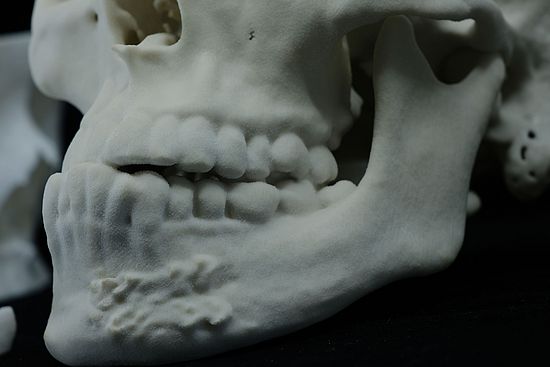PA12 Material Details

General Informations
Polyamide 12, abbreviated as PA12, is a versatile material in additive manufacturing. This plastic is known for its high dimensional stability, toughness, and remarkable flexibility. Even very thin wall thicknesses below 0.5 mm can be produced reliably and effectively using the laser sintering process. This makes it well-suited for printing applications like film hinges, snap-fit components, and click mechanisms. PA12 boasts exceptional durability and is skin-friendly, biocompatible, food-safe, FDA compliant, and approved for automotive use. As a result, it finds extensive use in the food and pharmaceutical industries, medical technology, and the automotive sector.
Mass Production
PA12 is frequently utilized in small and medium-scale production due to significant cost savings achievable through the powder bed manufacturing method. Additionally, PA12 excels in prototype and design model applications, thanks to its precision and stability.
Industrial Quality
Components made from PA12 are fabricated using the laser sintering process. Parts produced with laser sintering machines exhibit the same level of quality as injection-molded or milled plastic components. PA12 parts can withstand continuous stress over extended periods, making them a preferred choice in various industrial applications.
Cost-effective Design Freedom
By utilizing powder bed printing without the need for support material, PA12 offers substantial design freedom. This allows for the cost-effective production of complex components without post-processing. Entire assemblies, complete with integrated functions and movement, can be directly manufactured in a single print run. The complexity of the component does not impact the cost significantly, meaning a basic block costs nearly the same as a functional motor model. Entire assemblies with integrated features and moving parts can be produced in a single printing process.
Post-processing
PA12 components are of end-user quality and can be refined and further processed in various ways. Mechanical processes such as threading and milling are equally feasible.
Coloration
Additionally, components can be dyed through immersion, making them waterproof.
Printing in SLS PA12
Minimum Wall: 0.8 mm
Smalest Detail: 0.1 mm
Layer hight: 0.1 mm
Max Print size: 300 x 300 x 300 mm
Tollerance: 0.2% min ±0.15 mm
Delivery Times: Typicaly 5-8 Businessdays

Pro`s and Con`s
Pro:
- Long-lasting: PA12 parts are durable and designed for extended use.
- Exceptionally Tough and Wear-Resistant: It exhibits high resistance to wear and tear.
- Very High Component Quality: PA12 delivers parts with exceptional quality.
- High Reproducibility: Offers precise replication with minimal deviation (±0.05 mm).
- Absolute Design Freedom Without Support Material: Allows for complex designs without additional support.
- Mechanically Robust: PA12 components can withstand mechanical stress.
- Versatile Post-processing: Allows for various post-production techniques.
- Food-Safe and Biocompatible: Suitable for use in food and medical applications.
- Production-Ready: Ideal for both small-scale and mass production.
- High Heat Resistance (120°C): Can withstand elevated temperatures.
Con:
- High Water Absorption: PA12 has a tendency to absorb water.*
- Warpage in Very Large Components: Large parts may experience warping.
- Prone to Contamination in Raw State: The raw material can be easily contaminated.*
- Slightly Grainy Surface (Rz 30 – Rz 50): Surface finish may have a slightly grainy texture.
- Yellowing of Pure White Models Over Time: White models may experience yellowing over time*
Note: The disadvantages marked with an asterisk (*) can be mitigated or circumvented through immersion dyeing.*



Applications of PA12 3D Printing
PA12 offers a wide range of applications due to its versatility and exceptional properties. It is well-suited for creating visual models, exhibition prototypes, architectural models, and manufacturing highly complex geometries, including internal structures, conduits, and undercuts. PA12's outstanding abrasion and fracture resistance make it a preferred choice for tools, grippers, and guiding components.
- Mechanical Components and Machine Parts: PA12 is ideal for producing durable mechanical parts and components used in machinery.
- Highly Complex Assemblies: Its ability to handle intricate designs makes it suitable for manufacturing complex assemblies.
- End-User Components: PA12 is used in creating end-user products that require robustness and precision.
- Structural Components and Snap-Fit Applications: It is employed in structural parts and snap-fit applications where strength and reliability are crucial.
- Consumer Goods: PA12 finds application in various consumer products.
- Food Industry: Thanks to its food-safe properties, PA12 is used in the food industry for various applications.
- Automotive Industry: PA12 components can be found in the automotive sector, especially in areas demanding resilience.
- Medical Technology: Its biocompatibility makes it suitable for medical devices and equipment.
Technical Specifications
General Properties
- Biocompatible according to EN ISO 10993-1 USP/level VI/121 °C.
- Approved for food contact according to EU Plastics Directive 2002/72/EC (Exception: Highly alcoholic foods).
Mechanical Properties
Property | Test Method | Value |
Izod Impact Notched (23°C) | ISO 180/1A | 4.4 Kj/m² |
Shore D Hardness (15s) | ISO 868 | 75 |
Density | N/A | 0.93 |
Property | Test Method | Value |
Elastic Modulus (X-Y) | ISO 527, GB/T 1040 | 1650 MPa |
Elastic Modulus (Z) | ISO 527, GB/T 1040 | 1650 MPa |
Tensile Strength (X-Y) | ISO 527, GB/T 1040 | 48 MPa |
Tensile Strength (Z) | ISO 527, GB/T 1040 | 42 MPa |
Elongation at Break (X-Y) | ISO 527, GB/T 1040 | 18% |
Elongation at Break (Z) | ISO 527, GB/T 1040 | 4% |
Flexural Modulus (X-Y) | ISO 178, GB/T 9341 | 1500 MPa |
Flexural Modulus (Z) | ISO 178, GB/T 9341 | N/A |
Flexural Strength (X-Y) | ISO 178, GB/T 9341 | N/A |
Flexural Strength (Z) | ISO 178, GB/T 9341 | N/A |
Impact Strength (Charpy X-Y) | ISO 179, GB/T 1043 | 53 KJ/m² |
Impact Strength (Charpy Z) | ISO 179, GB/T 1043 | N/A |
Thermal Properties
Property | Test Method | Value |
Melting Temperature | ISO 11357-1/-3 | 176 °C |
Vicat Softening Temperature | ISO 306, GB/T 1633 | 163 °C |



